NASA has produced thousands of images over its illustrious 65-year history, but some images have had a far greater impact than others. Among this vast portfolio, certain images stand out for having reshaped our understanding of space and our place within it, capturing moments that have both ignited the collective imagination and further driven our sciences forward.
Oftentimes, we can’t know something exists until we see it, and sometimes those unexpected things that suddenly come into focus can have Earth-shattering or even existential impacts. NASA, through its great work, is responsible for many of these images, this selection being among the most consequential in expanding human knowledge and perspective, while also leaving us wanting for more.
One small step

This image of Buzz Aldrin’s bootprint from the Apollo 11 mission symbolizes a significant moment in history when humans first walked on the Moon on July 20, 1969. It reflects humanity’s capacity to explore space in person, kickstarting a radical new era of extraterrestrial discovery.
The OG Hubble deep field
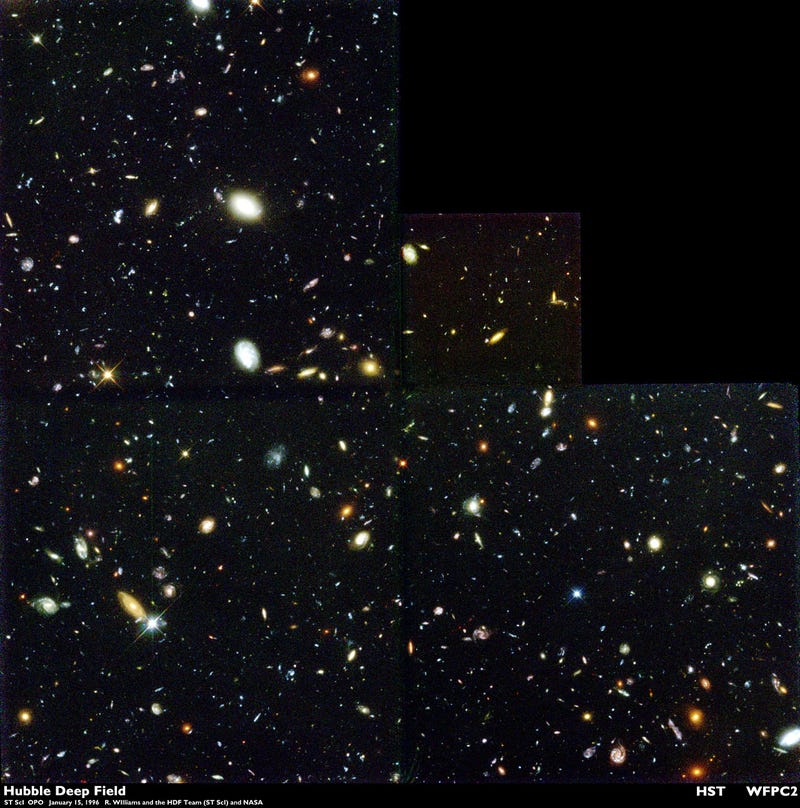
In December 1995, the Hubble Space Telescope focused on a seemingly empty patch of sky in the constellation Ursa Major to capture a groundbreaking “deep field” image of deep space. This project, done over 10 days, was inspired by the intriguing findings from earlier deep-space observations made by Hubble, NASA says. The idea was to circumvent light from our own Milky Way and nearby galaxies to peer as far back as possible into the universe’s history. At the time, media outlets commonly referred to it as Hubble “seeing the Big Bang.”
The deep field presented a staggering tapestry of nearly 3,000 galaxies in various developmental stages, some so ancient that they offered a glimpse into the nascent universe. This image profoundly expanded our comprehension of the universe’s evolution and the complex processes of galaxy formation, but it also made us feel very, very tiny.
And also Webb’s deep field
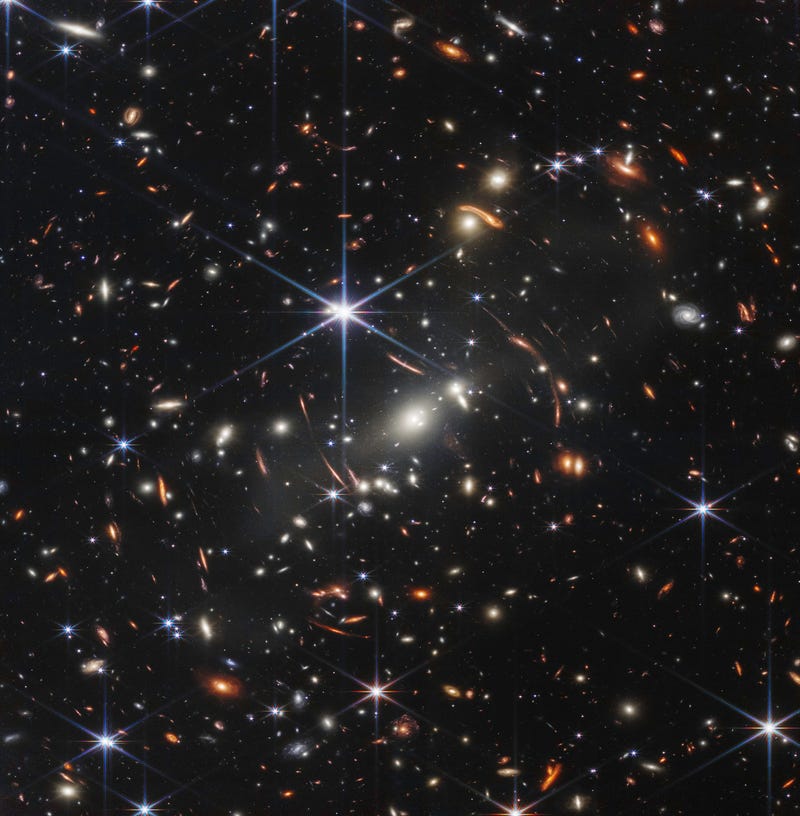
For younger space enthusiasts, the Webb Space Telescope’s historic first deep field conveyed a similar sense of existential awe, while showcasing the awesome power of the newly deployed observatory.
Pluto’s heart
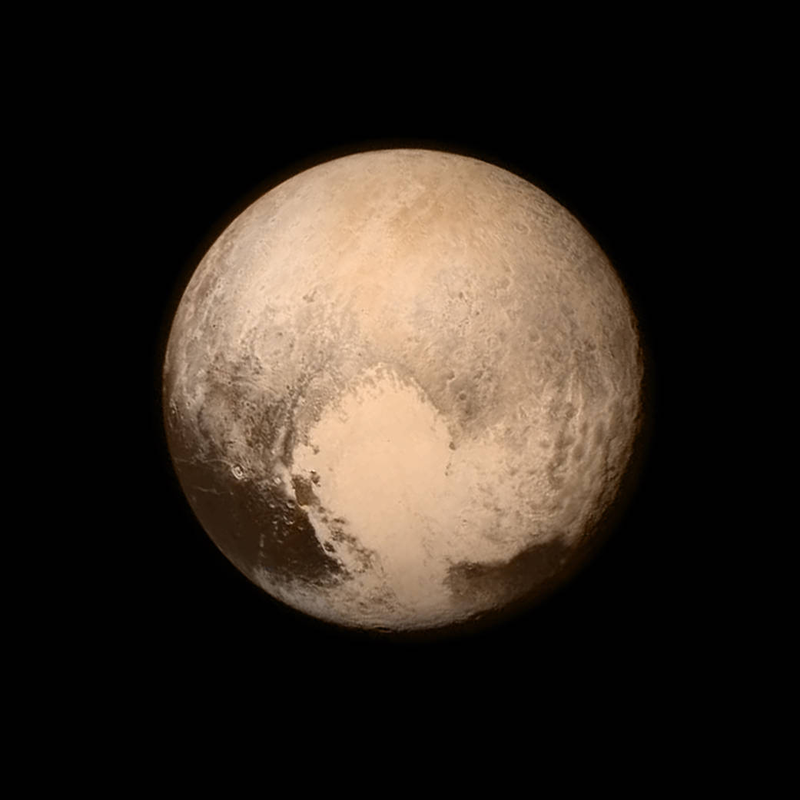
NASA’s New Horizons mission gave us the first close-up images of Pluto, revealing a complex and varied landscape, including the now-famous heart-shaped region named Tombaugh Regio. The images from New Horizons transformed Pluto from a distant, blurry object into a world with diverse geography, from towering ice mountains to vast, smooth plains.
This intimate portrayal challenged our previous understanding of the outer solar system’s dynamics, suggesting that even small, distant bodies can host complex geological processes, and aren’t just dead rocky worlds. Moreover, the clarity and detail of these photos galvanized public interest in deep space exploration, reigniting a sense of wonder about the mysteries that lie at the outer edges of our solar neighbourhood.
Space drifter
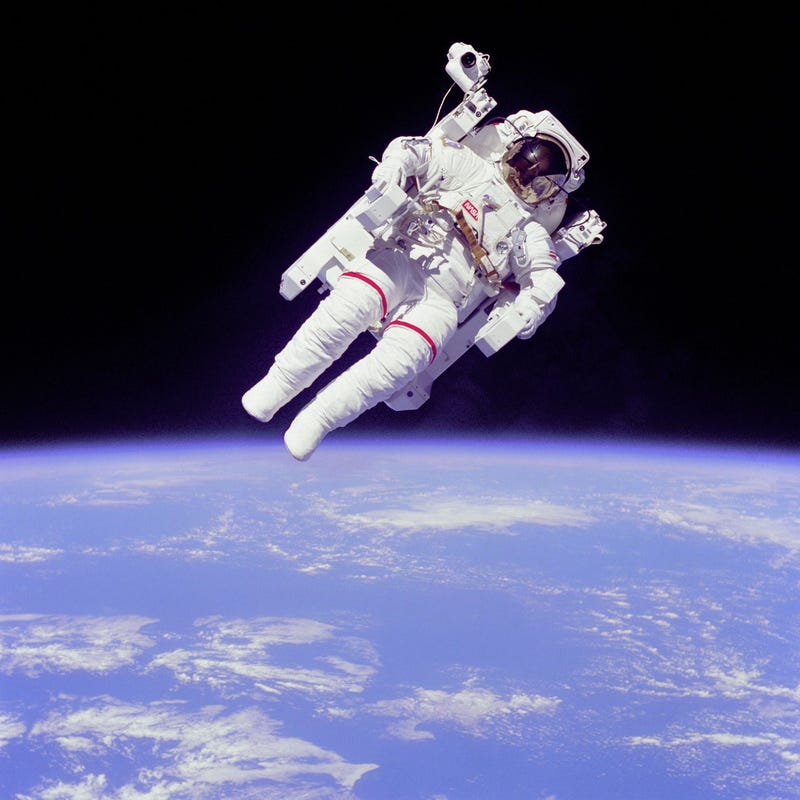
On February 7, 1984, NASA astronaut Bruce McCandless made history during the STS-41-B mission by performing the first untethered spacewalk. Venturing 320 feet (98 meters) from the Space Shuttle Challenger, McCandless tested the Manned Maneuvering Unit (MMU)—a nitrogen jet-propelled backpack that allowed for unprecedented freedom in space. Spacewalks were already commonplace among NASA astronauts—but this felt truly sci-fi.
Blue Marble
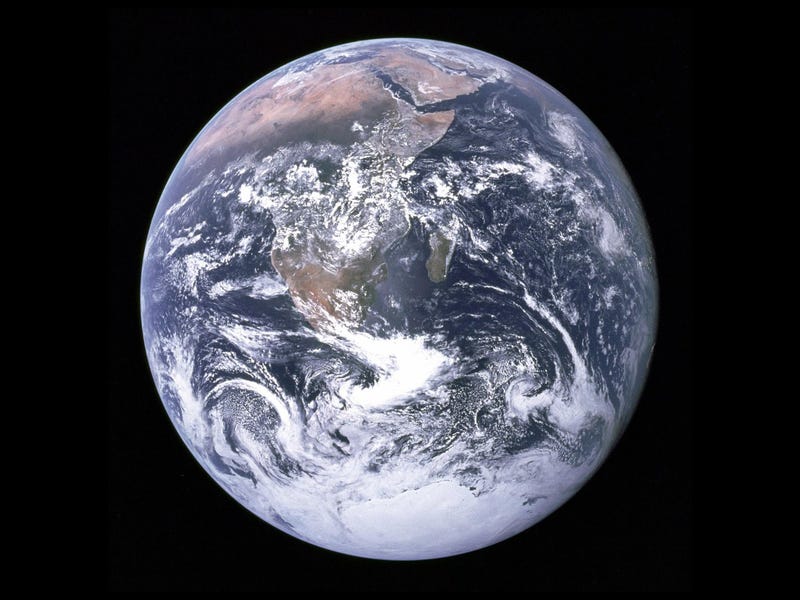
The “Blue Marble” photograph taken by Apollo 17 astronauts on December 7, 1972, stands out for its depiction of the Earth as a coherent sphere. This view showcased the planet’s totality from space for one of the first times, highlighting Earth as a single entity with an interconnected biosphere. The image naturally became a rallying symbol for the burgeoning environmental movement, underscoring the need to care for our lonesome home.
Beyond its environmental implications, the photograph also marked a milestone in space exploration, demonstrating the capacity to capture such images from a significant distance from Earth. Its widespread reproduction (it’s one of the most reproduced images in history) has bolstered its role in cultural and political dialogues, often highlighting the planet’s lack of visible borders from space and promoting a message of global solidarity.
The historic handshake in space

The Apollo-Soyuz Test Project marked a historic moment of detente between the United States and the Soviet Union, as it culminated in the first international handshake in space, on July 17, 1975. Astronaut Thomas Stafford and cosmonaut Alexei Leonov, representing their nations’ respective space agencies, extended their hands in a gesture of peace and collaboration within the cramped quarters connecting their spacecraft. It made for an improbable sight, considering the intensity of the Space Race. Accordingly, it symbolized the potential for greater diplomatic relations and shared scientific pursuits during the Cold War era.
As a result of this mission, space exploration shifted toward an era of international cooperation. The docking mechanisms developed for Apollo-Soyuz allowed future spacecraft from different nations to rendezvous and join in orbit, laying the groundwork for collaborative projects such as the International Space Station (ISS). The mission’s legacy is one of unity, influencing how space agencies now routinely work together in the name of scientific knowledge and the exploration of the cosmos.
Our first view of the depleting ozone layer
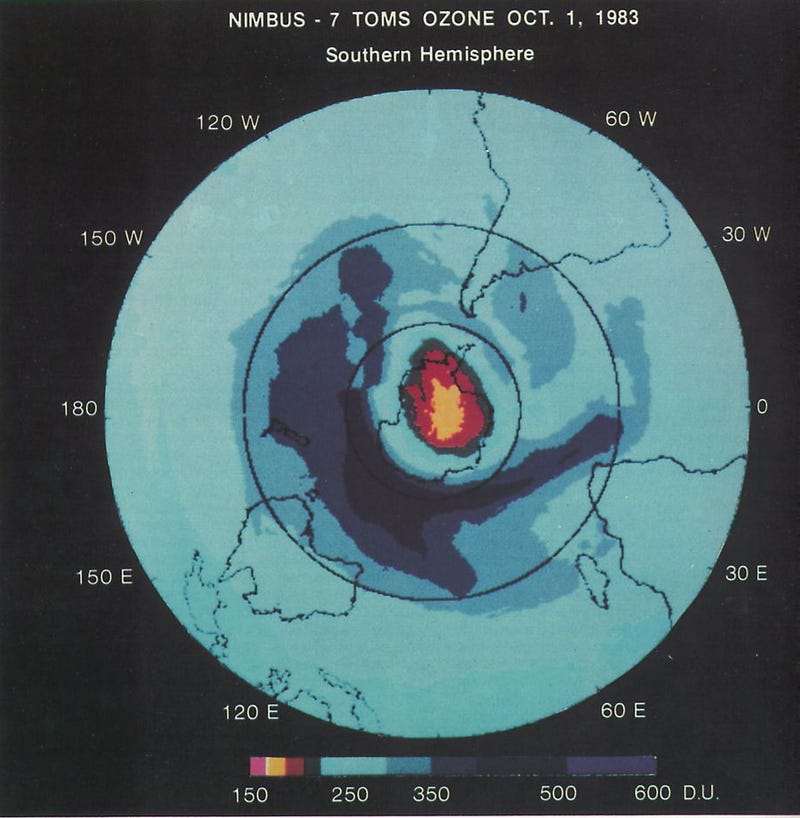
The discovery of the ozone layer hole in 1985, rightfully described as a black swan event (an unpredictable event with widespread consequences), was made possible by the Total Ozone Mapping Spectrometer (TOMS) on the NASA/NOAA Nimbus-7 satellite.
At a pivotal meeting in Prague, Czechoslovakia, in August 1985, atmospheric scientist Pawan Bhartia unveiled this satellite-based image that, for the first time, showcased the vast scale of the Antarctic ozone hole. This upsetting revelation transformed our understanding of the Earth’s atmosphere and its vulnerabilities, catalyzing global action that culminated in the 1987 Montreal Protocol—an international agreement to eliminate substances that deplete the ozone layer. NASA satellites continue to monitor the ozone hole, offering crucial data on this critically important atmospheric phenomenon.
Huygens visits a truly alien world
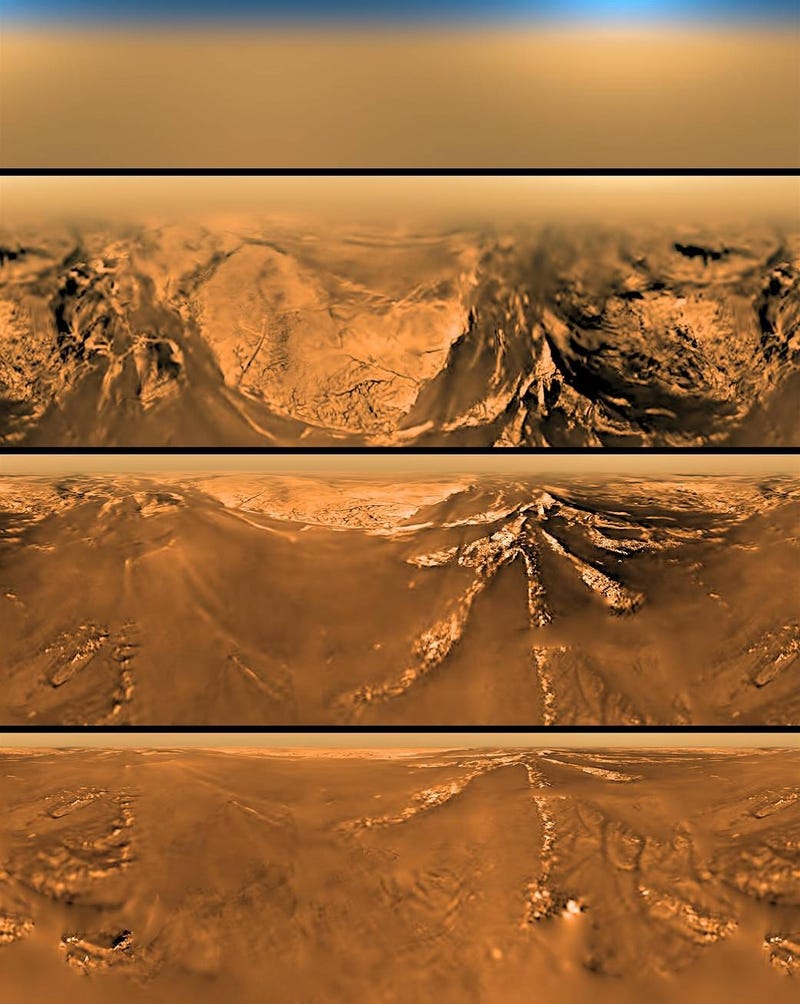
On January 14, 2005, the Huygens probe, part of the Cassini-Huygens mission—a collaboration between NASA, the European Space Agency, and the Italian Space Agency—made history with humanity’s first landing on an outer solar system moon: Titan, Saturn’s enigmatic satellite. These images made quite an impression on me at the time, as they showed something far more alien than anything I had previously seen from Moon, Mars, or elsewhere. What’s more, this mission revolutionized our understanding of Titan, revealing a world strikingly similar to early Earth with its weather systems and surface liquids (mostly methane), thereby altering our perceptions of where life-sustaining environments might exist in the solar system.
Hubble’s and Webb’s Pillars of Creation
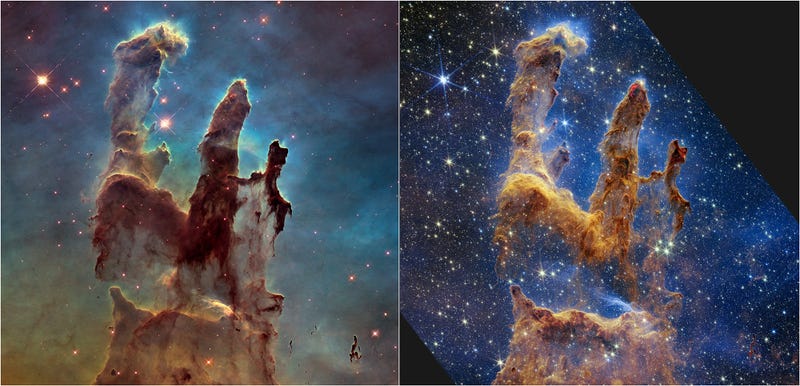
The Hubble and James Webb Space Telescopes’ perspectives on the Pillars of Creation are a testament to our ability to chronicle and study some of the most gorgeous views from deep space. Hubble’s visible light image, captured in 1995, revealed the silhouette and surface features of these stellar nurseries, while Webb’s infrared vision, taken in 2022, penetrated the dust, showing the stars forming within. Together, they offer a more complete understanding of star formation processes, illustrating how different wavelengths can unveil various aspects of cosmic phenomena. This type of imagery advances scientific inquiry, but it also captures our interest, encouraging us to consider the complexities and wonders of the universe.
Earthrise
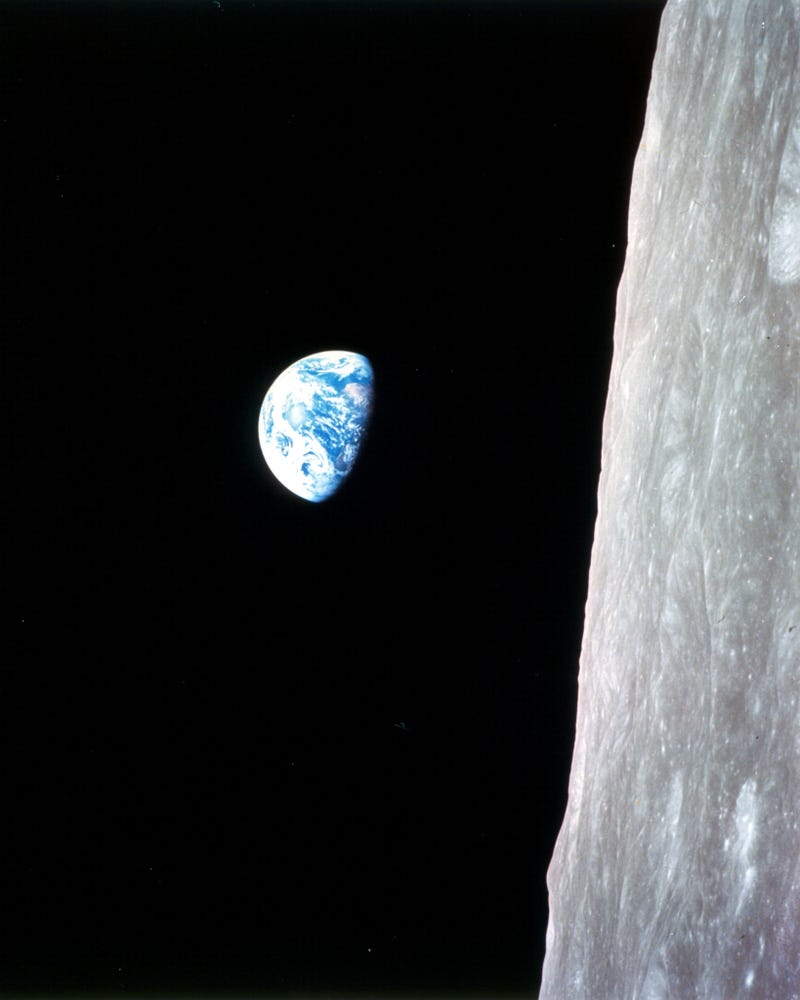
Captured by the Apollo 8 crew on December 24, 1968, this image of Earth rising over the lunar horizon altered the way humanity saw its place in the universe and became a symbol of the environmental movement. The photo was taken as the astronauts emerged from the Moon’s far side during their fourth orbit. This image is often rotated to display the Moon at the bottom, but this is the authentic orientation.
Esther: The first hurricane viewed from space
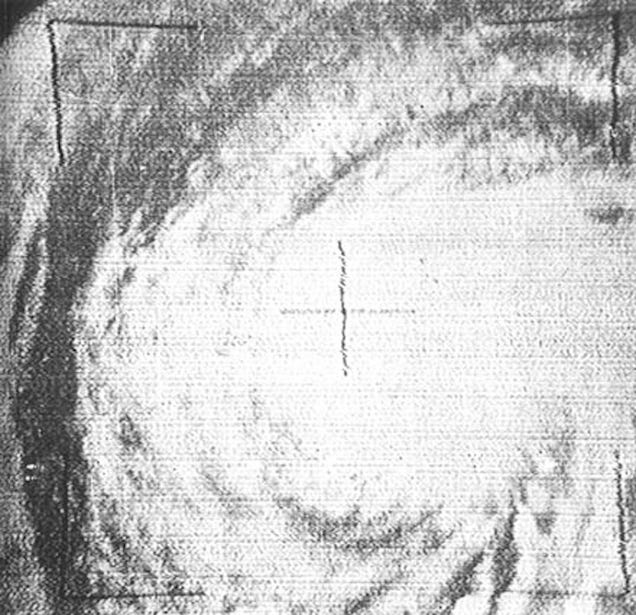
Tiros 3 was the United States’ first attempt at developing a satellite system for space-based weather observations, and it’s famous for capturing the first photographed image of a hurricane from space. The hurricane of note was Hurricane Esther, a significant tropical storm during the 1961 Atlantic hurricane season. The satellite’s photographs of Esther were groundbreaking at the time and provided meteorologists with a unique view of the structure of hurricanes, leading to advancements in the understanding of storm development and tracking. This capability has since become a critical tool in weather prediction and monitoring, significantly aiding in disaster preparedness and response.
First image of a black hole
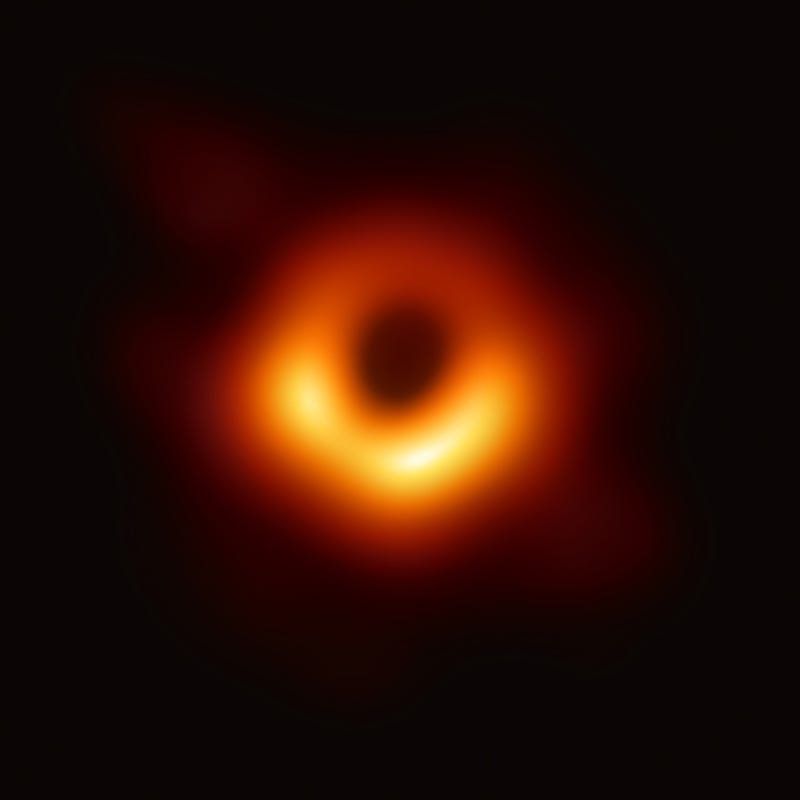
The Event Horizon Telescope (EHT) collaboration, an international team of astronomers, led the effort that produced the historic first image of a black hole’s shadow in 2019, with NASA contributing significant research and technology to the project. This collaborative achievement captured the supermassive black hole at the centre of the galaxy M87, showing us something we had never seen before, but had always wanted to.
Collapse of the Larsen B Ice Shelf in Antarctica
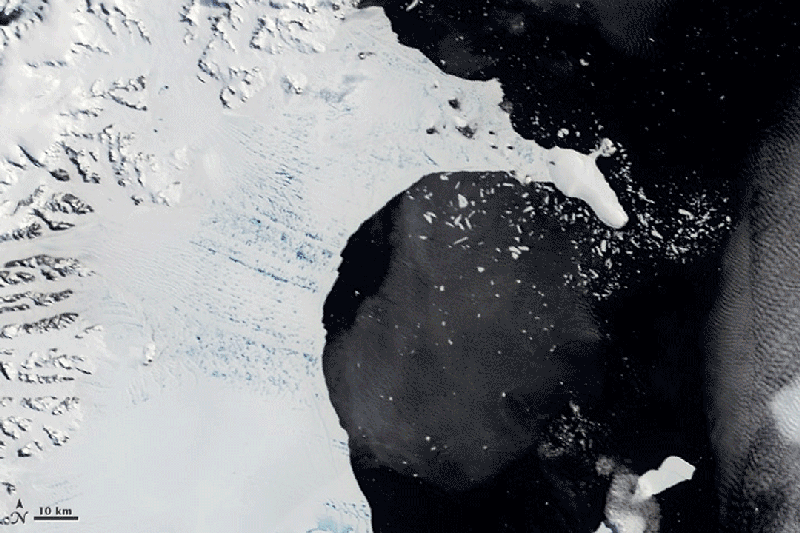
In 2022, the MODIS instrument on NASA’s Terra satellite observed the dramatic collapse of the Larsen B Ice Shelf in Antarctica, an event that vividly illustrated the real-time consequences of a warming planet and the fragility of polar ice structures. This collapse, covering an area larger than New Hampshire and Vermont combined, offered sobering evidence of the rapid and dramatic changes occurring in our environment. It served as a visual wake-up call, illustrating not just the abstract concept of climate change, but its very real, immediate consequences. Since then, similar images have been pivotal in increasing public awareness and understanding of the urgent need for climate action.
Our first home in space
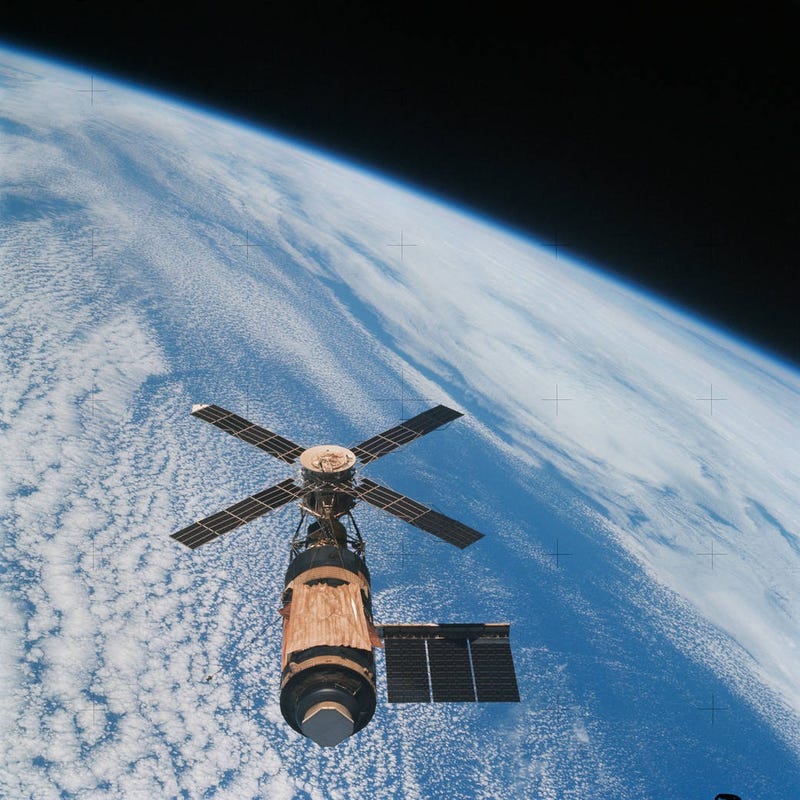
Skylab, launched to space on May 14, 1973, was the first U.S. space station. Accordingly, the photo above, taken on February 8, 1974, symbolises this major milestone in space exploration. The Skylab 4 crew, consisting of Gerald Carr, Edward Gibson, and William Pogue, captured this view upon leaving the station for the last time.
Skylab played a pivotal role in popularizing space exploration, inspiring public interest, and highlighting the potential for long-duration human missions in space. It also underscored the scientific capabilities of orbital space stations, particularly in solar astronomy and studies on the effects of microgravity on humans, thereby influencing the future direction of space research.
Pale Blue Dot
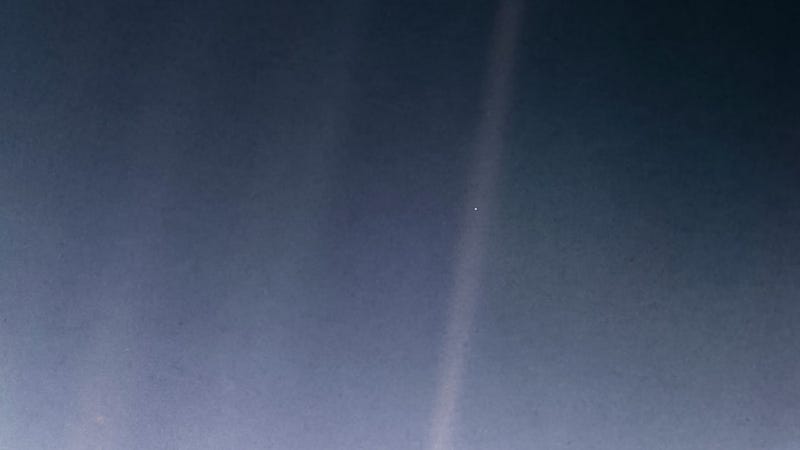
NASA’s Voyager 1 spacecraft captured this view of Earth—appearing as a speck of light—on February 14, 1980, at a distance of roughly 3.2 billion miles (6 billion km) from the Sun—beyond the orbit of Neptune. The words of Carl Sagan, as featured in his 1994 book, Pale Blue Dot: A Vision of a Human Future in Space, best describes the significance of this ultra-famous image:
… Look again at that dot. That’s here. That’s home. That’s us. On it everyone you love, everyone you know, everyone you ever heard of, every human being who ever was, lived out their lives. The aggregate of our joy and suffering, thousands of confident religions, ideologies, and economic doctrines, every hunter and forager, every hero and coward, every creator and destroyer of civilization, every king and peasant, every young couple in love, every mother and father, hopeful child, inventor and explorer, every teacher of morals, every corrupt politician, every “superstar,” every “supreme leader,” every saint and sinner in the history of our species lived there – on a mote of dust suspended in a sunbeam.
The Earth is a very small stage in a vast cosmic arena. Think of the rivers of blood spilled by all those generals and emperors, so that, in glory and triumph, they could become the momentary masters of a fraction of a dot. Think of the endless cruelties visited by the inhabitants of one corner of this pixel on the scarcely distinguishable inhabitants of some other corner, how frequent their misunderstandings, how eager they are to kill one another, how fervent their hatreds. Our posturings, our imagined self-importance, the delusion that we have some privileged position in the Universe, are challenged by this point of pale light.
Our planet is a lonely speck in the great enveloping cosmic dark. In our obscurity, in all this vastness, there is no hint that help will come from elsewhere to save us from ourselves.
The Earth is the only world known so far to harbor life. There is nowhere else, at least in the near future, to which our species could migrate. Visit, yes. Settle, not yet. Like it or not, for the moment the Earth is where we make our stand.
It has been said that astronomy is a humbling and character building experience. There is perhaps no better demonstration of the folly of human conceits than this distant image of our tiny world. To me, it underscores our responsibility to deal more kindly with one another, and to preserve and cherish the pale blue dot, the only home we’ve ever known.
These goosebump-inducing words, so potent 30 years ago, resonate even more powerfully today.
